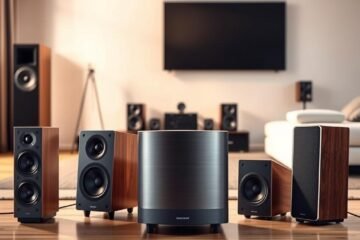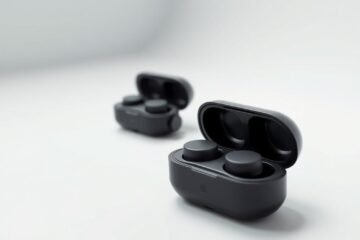Did you know that 87% of professional gamers feel better when using open-back headphones? This shows why finding the best open-back headphones 2025 is key for serious audio fans.
Open-back headphones are changing the game in audio tech. They offer a soundstage that closed-back models can’t match. This makes games feel more real and music sound clearer than ever.
What sets them apart is their design. Unlike sealed headphones, open-back models let air flow through. This gives you an immersive audio experience that puts you right in the action.
Whether you’re playing games or listening to music, open-back headphones change how you hear sound. The tech has improved a lot, making now the best time to upgrade your setup.
Check our best ANC headphones guide for your life style,Whether you travel a lot, work from home, love to exercise, or enjoy music.
Key Takeaways
- Open-back designs provide superior soundstage and spatial awareness compared to closed models
- Professional gamers report 87% improvement in audio positioning with open-back headphones
- Air flow through ear cups creates natural, room-like acoustics for realistic sound reproduction
- Modern open-back technology offers significant advances in comfort and audio quality
- These headphones excel in both competitive gaming and high-fidelity music listening
Why Open-Back Headphones Are Revolutionizing Audio in 2025
Open-back headphones are changing how we listen to sound in 2025. They do this thanks to new driver tech and materials science. These advancements have made them perform better than ever before.
The change starts with cutting-edge driver innovations. These drivers bring clear and detailed sound. Now, even everyday people can enjoy high-fidelity sound that’s as good as studio monitors.
Changes in culture have also played a big role. With high-resolution streaming services like Tidal and Qobuz, we need better sound equipment. Now, we can listen to lossless audio that shows off open-back headphones’ full capabilities.
Remote work has also led to new needs for audio gear. Home office setups need headphones that are comfy for long hours and sound professional. Open-back headphones meet these needs perfectly.
“The gaming community has embraced open-back headphones for their superior soundstage and positional audio accuracy, making them essential for competitive gaming.”
PC Gamer Audio Testing Report
Gamers want immersive sound experiences, and open-back headphones deliver. They offer the spatial awareness needed for gaming and natural sound for single-player games.
Manufacturers have solved old problems with new tech. Advanced acoustic dampening keeps sound in while keeping the design open. New materials make them last longer without losing comfort.
These tech and cultural changes have made 2025 a big year for open-back headphones. Now, they’re not just for audiophiles but for anyone who wants immersive sound. Whether you’re mixing music, gaming, or just streaming, you can enjoy top-notch sound.
Why Choose Open-Back Headphones in 2025
Choosing open-back headphones in 2025 offers three key benefits. They change how you listen to music, videos, and games. These headphones are perfect for those who love great sound.
Open-back headphones let air move freely, improving sound quality. This design difference makes listening more natural and enjoyable. You’ll hear audio in a way that closed-back headphones can’t match.
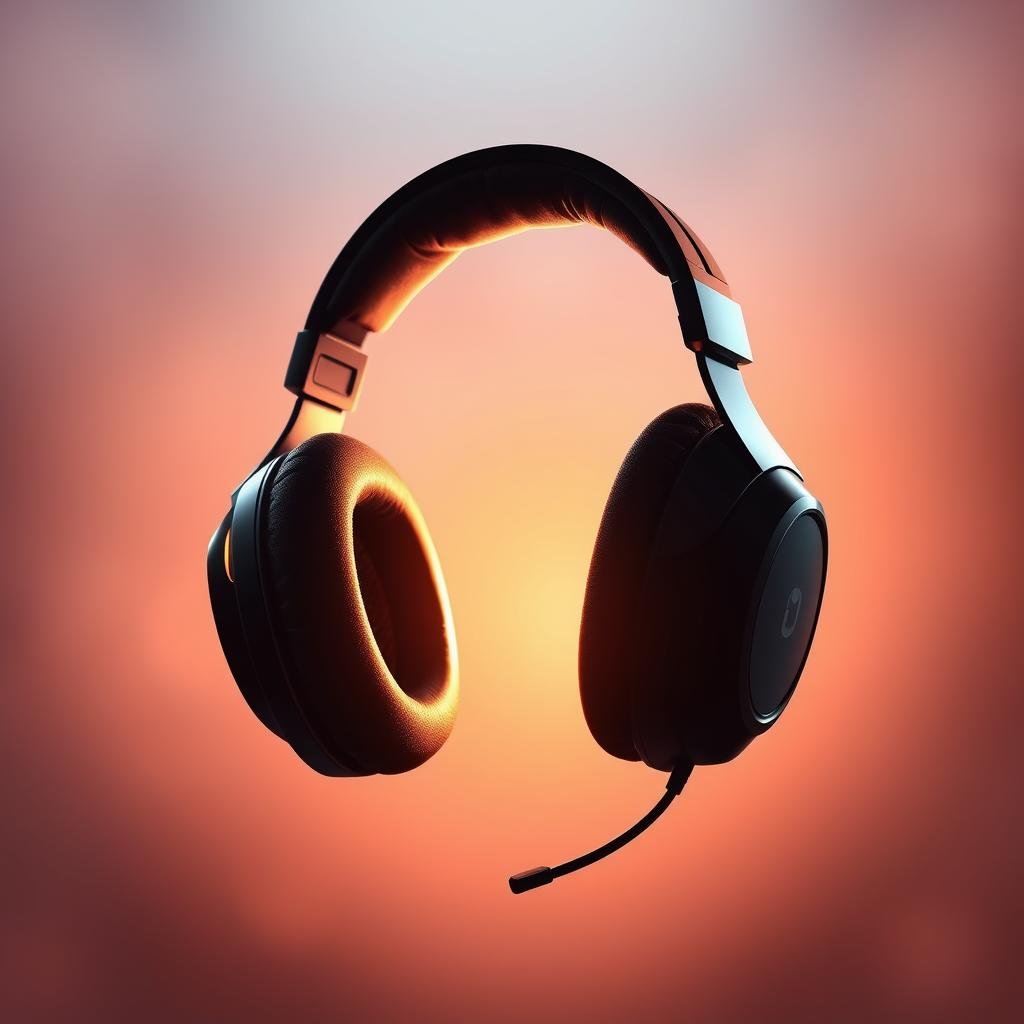
Superior Soundstage and Spatial Awareness
Open-back headphones create a wide soundstage. This is like having a high-end speaker system at home. Sound waves flow freely, avoiding the clutter that closed-back headphones can have.
Music sounds like it’s coming from all around you. Each instrument has its own spot in space. This is great for music with lots of layers and depth.
These headphones are also great for finding where sounds come from. This is useful for work and gaming. You can pinpoint sounds with ease.
Natural Sound Reproduction for Critical Listening
Audio experts use open-back headphones for critical listening. They provide accurate sound without coloration. The design avoids resonance problems found in closed-back models.
These headphones give you a natural sound experience. Bass is tight, mid-range is clear, and treble is smooth. This makes them perfect for mixing and mastering.
They let you hear audio as it was recorded. This is important for anyone who needs to hear every detail. Open-back headphones reveal sounds that other headphones might hide or distort.
Enhanced Gaming Performance and Immersion
Open-back gaming headphones give you an edge in gaming. They help you find enemies and dangers more easily. This is thanks to their accurate sound positioning.
Gaming feels more real when you can hear where sounds come from. Footsteps and gunshots sound like they’re right next to you. This makes games more exciting and strategic.
These headphones also make long gaming sessions more comfortable. They don’t put pressure on your ears like closed-back models do. This means you can game for hours without getting tired.
Looking for dedicated headsets? Don’t miss our Best Wireless Gaming Headphones for Gameplay – 2025,
covering the top wireless picks for immersive gaming sessions.
Key Features to Look for Before Buying Open-Back Headphones
Before buying open-back headphones, it’s important to look at several key factors. These factors help you choose headphones that fit your listening style and equipment. The right features ensure you get great value and sound quality.
Consider technical needs, comfort, and how you plan to use the headphones. Whether for studio reference headphones or gaming, these features will help you make the right choice.
Driver Technology and Sound Signature
The type of driver affects sound quality. Dynamic drivers are known for their strong bass and are great for gaming and casual listening. They use magnets to move a diaphragm, creating sound waves that are warm and engaging.
Planar magnetic drivers offer detailed and accurate sound across all frequencies. They use a thin diaphragm and magnets, leading to fast response times and less distortion. Planar magnetic headphones are excellent for complex music.
Electrostatic drivers are the top choice for the clearest sound. They need special amplification and are more expensive. Your choice depends on your budget and desired sound quality.
Comfort and Build Quality for Extended Use
Comfort is key for long listening sessions, whether mixing audio or gaming. Weight distribution is important for comfort over time. Look for headphones with well-padded headbands that spread the weight evenly.
Ear pad materials affect comfort and sound isolation. Velour pads are breathable and cool, while leather is durable but may cause sweating. Memory foam fits your ear shape for comfort without pressure.
Build quality affects durability and reliability. Metal construction in the headband and joints means they last longer. Quality materials are worth the extra cost in premium models.
Impedance and Power Requirements
Impedance tells you how much power headphones need for optimal volume. Low impedance headphones (16-32 ohms) work well with smartphones and gaming consoles without extra amplification. They’re convenient for on-the-go use.
High impedance headphones (250-600 ohms) need dedicated amplification but offer better sound quality. Studio reference headphones often have higher impedance for professional use.
Sensitivity ratings work with impedance to determine power needs. Higher sensitivity means louder sound with less power. Think about your source devices when looking at these specs.
Compatibility with Amps, DACs, and Gaming Consoles
Your headphones must work well with your audio gear. Gaming console compatibility varies by headphone model and impedance. Most low-impedance headphones work well with PlayStation and Xbox.
Desktop amplifiers enhance high-impedance headphones, providing clean power and better sound. DAC/amp combos improve digital audio sources more than built-in soundcards.
Connection types affect compatibility and ease of use. Detachable cables let you switch between connectors, like 3.5mm for mobile devices and 6.35mm for audio interfaces. Some headphones come with multiple cable options.
| Feature Category | Entry Level | Mid-Range | Premium | Professional |
|---|---|---|---|---|
| Driver Type | Dynamic 40-50mm | Dynamic 50mm+ | Planar Magnetic | Electrostatic/Planar |
| Impedance Range | 32-80 ohms | 80-250 ohms | 250-300 ohms | 300-600+ ohms |
| Build Materials | Plastic/Basic Metal | Metal Frame | Premium Metals | Aerospace Materials |
| Cable Options | Fixed Cable | Detachable | Multiple Cables | Custom Connectors |
Best Open-Back Headphones 2025 – Top Picks and Reviews
Experts and audiophiles have picked five open-back headphones as the best for 2025. Each model has unique strengths for different tastes and budgets. They offer top-notch sound quality and the natural feel of open-back designs.
We tested these headphones for sound, build, comfort, and value. Our reviews will help you choose based on your needs and preferences.
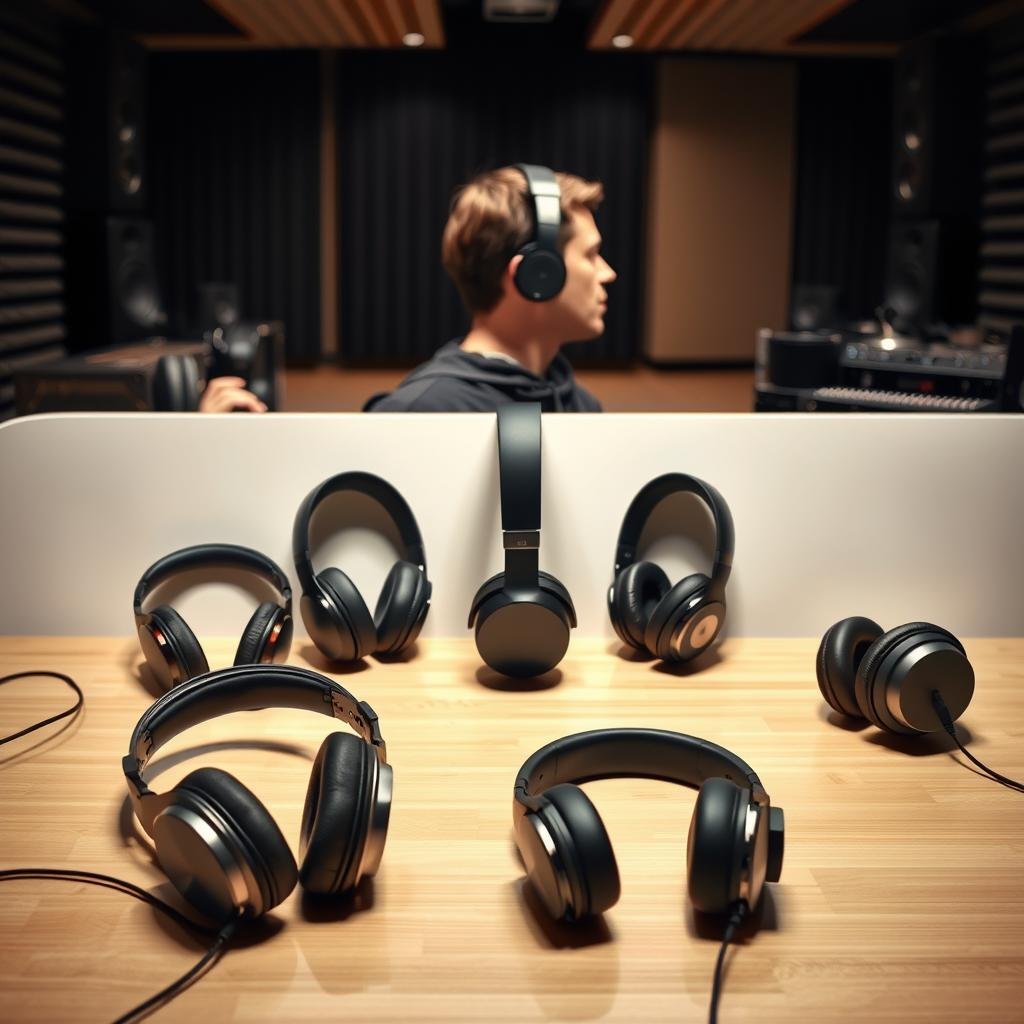
Sennheiser HD 660S2 – Audiophile Favorite
The sennheiser open-back HD 660S2 is perfect for those who love both detail and music. It has a 38mm dynamic driver for clear sound across all frequencies. The sound is clear and natural, without losing warmth or musicality.
It’s built with Sennheiser’s high standards in mind. It’s light, weighing just 260 grams, making it comfortable for long use. The velour ear pads breathe well, and the adjustable headband fits different head sizes easily.
It has a frequency response of 10Hz to 41kHz and an impedance of 150 ohms. This makes it work well with both dedicated amps and portable sources. The detachable cable is a plus for those who like different connections.
Pros: Clear midrange, comfy for long use, top build quality, versatile impedance. Cons: It’s pricey, needs good amplification, and has less bass than closed-backs.
Beyerdynamic DT 990 Pro – Studio & Gaming Choice
The beyerdynamic dt 990 pro is a legend among audio pros and gamers. It has a V-shaped sound for strong bass and clear treble. The 45mm Tesla drivers offer great dynamics and instrument separation.
German engineering shows in its sturdy build for daily use. The coiled cable and strong headband reflect its studio roots. It’s comfy even during long gaming sessions, thanks to soft padding and light weight.
It shines in gaming with precise audio positioning. The clear treble helps spot subtle cues in games. The wide soundstage makes games feel more real.
Pros: Great for gaming, durable, affordable, and detailed treble. Cons: Treble can be tiring, fixed cable, needs amplification for loud sound.
HIFIMAN Sundara – Premium Planar Magnetic Headphones
The hifiman sundara shows off planar magnetic tech at a good price. These hifiman headphones have thin diaphragms for fast response and detail. They have a neutral sound for critical listening and professional work.
Planar magnetic drivers offer clear sound and less distortion. They have a uniform magnetic field for consistent sound. This tech improves sound quality and linearity.
The updated headband makes it more comfortable than before. It feels balanced, and the ear cups fit most ears well. The build quality has also improved, addressing past durability issues.
Pros: Planar magnetic tech, neutral sound, better build, and great detail. Cons: Needs strong amplification, heavier, and hard to find in some places.
Philips Fidelio X3 – Comfortable All-Day Listening
The philips fidelio x3 focuses on comfort and sound quality. It has a warm sound for long listening without fatigue. The 50mm drivers give rich bass and smooth midrange for various music.
It’s designed for comfort with a self-adjusting headband and plush ear pads. It’s light, weighing only 300 grams, despite its large drivers. The ear cups rotate and pivot for different head shapes.
The detachable cable system offers 1.2m and 3m options. The build is impressive with premium materials and solid construction. The open-back design offers natural sound and good bass.
Pros: Exceptional comfort, warm sound, detachable cables, and attractive design. Cons: Less detailed than others, hard to find, and pricier than expected.
Drop + Sennheiser HD 58X Jubilee – Budget Audiophile Option
The Drop + Sennheiser HD 58X Jubilee offers real audiophile quality at a good price. This collaboration brings Sennheiser’s expertise and Drop’s community focus for great value. The sound balances detail and warmth well.
The 150-ohm impedance makes it easy to drive, unlike many audiophile options. Most quality sources can power it well, making it perfect for new listeners. This makes it a great choice for those starting with high-quality audio.
It matches Sennheiser’s reputation with durable build and comfy padding. The matte black finish makes it stand out. The removable cable is a plus for those who like different connections.
Pros: Great value, easy to drive, Sennheiser build, and balanced sound. Cons: Limited availability, basic cable, and less refined than premium Sennheiser models.
| Model | Driver Type | Impedance | Weight | Price Range |
|---|---|---|---|---|
| Sennheiser HD 660S2 | 38mm Dynamic | 150 ohms | 260g | $500-600 |
| Beyerdynamic DT 990 Pro | 45mm Tesla Dynamic | 250 ohms | 250g | $150-200 |
| HIFIMAN Sundara | Planar Magnetic | 37 ohms | 372g | $350-400 |
| Philips Fidelio X3 | 50mm Dynamic | 30 ohms | 300g | $300-350 |
| HD 58X Jubilee | 38mm Dynamic | 150 ohms | 260g | $150-180 |
How Open-Back Headphones Compare to Closed-Back Models
Open-back and closed-back headphones serve different needs. Each design offers unique benefits for specific listening scenarios. The main design differences create distinct audio experiences for different users and environments.
Knowing these differences helps you pick the right headphones. Whether you want the best sound quality, need to block out noise, or seek the top audiophile headphones 2025, each type has its own role in the audio world.
Sound Quality and Soundstage Differences
The biggest difference is in sound presentation. Open-back headphones create a wide soundstage that makes music sound more natural and open. This is because air flows freely, preventing sound wave buildup that can cause resonance in closed designs.
Closed-back headphones offer a more intimate sound with stronger bass. The sealed design traps low frequencies, making bass more impactful. But, it might sacrifice soundstage width. This makes them great for bass-heavy music and gaming where sound effects are key.
Frequency response also varies between the two. Open-back headphones have a more linear frequency response, making them better for critical listening and audio production. The natural airflow prevents frequency buildup that can alter the sound signature.
For wired vs wireless open-back choices, wired models usually offer better sound quality. This is because they transmit audio without compression. Wireless open-back models are less common due to technical challenges in maintaining audio fidelity while managing power.
Noise Isolation and Environmental Considerations
Noise isolation is a key difference. Closed-back headphones block external sounds and prevent audio leakage, making them good for public spaces and offices. Open-back headphones, on the other hand, offer minimal noise isolation. Sound leaks in and out, making them unsuitable for noisy areas or situations needing privacy.
Environmental factors are important in choosing headphones. Open-back models are best in quiet, controlled environments where sound leakage won’t disturb others. They’re ideal for dedicated listening rooms, home studios, or late-night gaming when it’s quiet.
The lack of sound isolation in open-back designs also prevents ear fatigue during long listening sessions. The natural airflow keeps ears cooler and reduces pressure buildup that can happen with sealed designs.
Off the desk, switch to audio glasses for casual music and calls without sealing your ears.
Which One Should You Choose in 2025
Your choice between open-back and closed-back headphones depends on your needs and listening environment. Audiophile headphones 2025 trends show a growing preference for open-back designs among serious listeners who value sound quality most.
Choose open-back headphones for a quiet space and top sound quality. They’re best for critical listening, music production, competitive gaming, and long sessions where comfort is key. The wide soundstage they offer enhances immersive experiences for genres like orchestral music, jazz, and acoustic recordings.
Opt for closed-back headphones for versatility and practical use in various settings. They’re better for commuting, office use, bass-heavy music, and situations needing sound isolation. Closed-back models also offer more wireless and portable options.
| Feature | Open-Back Headphones | Closed-Back Headphones | Best Use Case |
|---|---|---|---|
| Soundstage Width | Excellent – Natural and spacious | Limited – More intimate | Classical music, gaming |
| Bass Response | Accurate but less impactful | Enhanced and punchy | Electronic music, movies |
| Noise Isolation | None – Sound leaks freely | Excellent – Blocks external noise | Public spaces, offices |
| Listening Environment | Quiet spaces only | Any environment | Home studios vs commuting |
| Comfort for Long Sessions | Superior – Better airflow | Good but can cause heat buildup | Extended gaming, work |
The choice depends on your priorities and listening habits. Many audio enthusiasts have both types. They use open-back for serious listening at home and closed-back for portable use and noisy areas.
Step-by-Step Guide to Setting Up Your Open-Back Headphones
Setting up your premium headphone brands right can make them a key to a immersive audio experience. Doing it correctly ensures they work their best and keeps them safe from the start.
Start with careful unboxing and inspection. Take your headphones out slowly and check for any damage from shipping. Look at the drivers, headband, and cable connections. Most quality headphones come well-protected, but catching damage early can prevent bigger problems later.
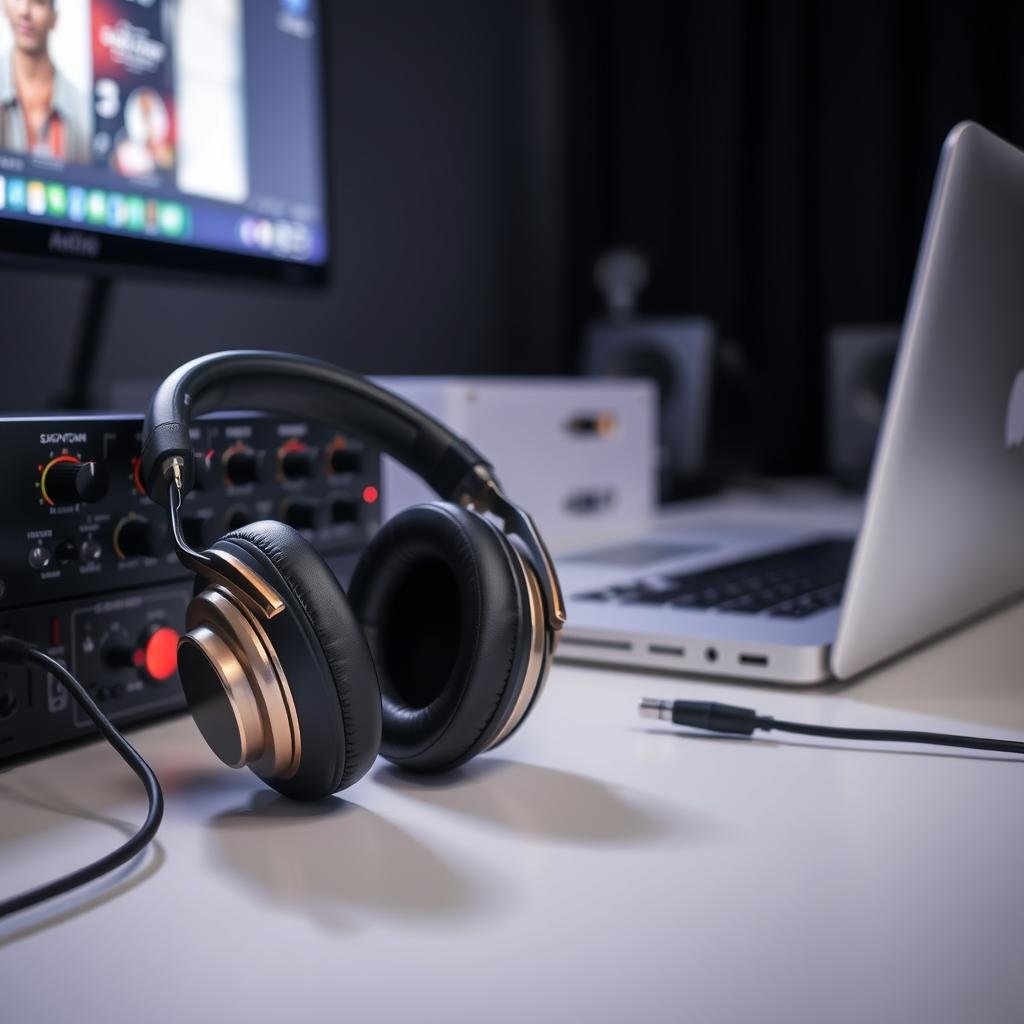
Put your headphones on your head the right way for comfort and sound. The ear cups should fit your ears without pressure. Adjust the headband so it feels even on your head.
How you wear them affects both comfort and sound. The drivers should fit your ear canals naturally. If you feel pressure or sound isn’t even, adjust how they fit before you go on.
Choose your listening environment wisely. Open-back headphones sound best in quiet rooms. Hard surfaces can cause unwanted echoes, while soft things help control sound better.
Start using your headphones gently at first. New ones need a break-in period of 40-100 hours. Start with low volumes and music you know well. This lets the drivers settle and reach their best sound.
- Play different music genres during break-in
- Keep the volume low at first
- Take breaks between long listening times
- Watch for any changes in sound
Do initial tests with music you know well. This helps you understand your headphones’ sound and spot any setup problems early. Pay attention to bass, midrange, and treble.
The best headphones make familiar music sound new, creating moments of rediscovery.
Troubleshoot common setup problems quickly. If the sound is off-balance, it might mean loose connections. Harsh treble could mean too loud volume or bad positioning. Muddy bass might mean not enough power.
Slowly increase the volume as you get used to the sound. This protects your hearing and lets you enjoy the full range of sound your headphones offer. The goal is to get that perfect immersive audio experience without getting tired.
Keep notes on your favorite settings and music genres. Note the best volumes for each. This helps you get back to the best sound quickly and is a guide for future tweaks.
Choosing the Right Amplification and DAC Setup
The right amplifier and DAC setup can make your open-back headphones sound amazing. Many people don’t realize how much better sound quality can be with the right power. Your headphones might sound okay from a phone or laptop, but they’re not reaching their full sound.
Knowing about impedance and sensitivity helps you pick the right amplifier. High-impedance headphones like the Sennheiser HD 800 S need more power. Low-sensitivity models, like the Audeze LCD-X, also need a lot of power, even if they have lower impedance.
- Solid-state amplifiers give clean, accurate sound
- Tube amplifiers add warmth and depth
- Hybrid designs offer a mix of both
Choosing a DAC depends on your devices and sound quality needs. Modern DACs support USB, optical, and coaxial inputs. But, most listeners won’t notice a difference beyond 16-bit/44.1kHz quality.
When it comes to budget, there are options for every level:
- Entry-level ($100-300): FiiO E10K or Schiit Fulla are good choices
- Mid-range ($300-800): Schiit Magni/Modi stack is a great value
- High-end ($800+): For demanding headphones like Focal Clear MG
Power needs vary a lot between headphones. Planar magnetic headphones need more current than dynamic drivers. Make sure to match your headphones’ needs with the amplifier’s output.
Think about where you’ll use your setup. Desktops can handle bigger amplifiers, while portable options are better for on-the-go listening. Some DAC/amp combos work well with gaming consoles and streaming devices.
Start with what your headphones need, then build your setup. Good amplification brings out details and dynamics you never knew were there in your music and games.
Tips to Get the Most Out of Your Open-Back Headphones
Your open-back headphones are full of amazing sound. But, to get the best out of them, you need to know a few tricks. Follow these tips to enjoy high-fidelity sound and make the most of your premium audio gear.
First, find a quiet spot to listen. Open-back headphones let in outside sounds, so pick a room with little noise. Stay away from fans and busy areas. Room acoustics are key to a great listening experience.
Adding soft things like rugs and curtains can help. They reduce harsh sounds that can mess with your headphones’ natural sound. A well-treated room makes the immersive sound even better.
Good quality music makes a big difference. Choose high-resolution audio files like FLAC or WAV for the best sound. Streaming services with CD-quality or hi-res options are great for convenience without losing sound quality.
Work on your critical listening skills. Pay attention to how different sounds are separated and how clear they are. Start with music you know, then try new things to improve your listening.
How you wear your headphones matters. Make sure the headband fits right and the ear cups seal your ears gently. Even small changes can make a big difference in comfort and sound.
Keep your headphones clean to keep them sounding good. Use a soft brush to clean the drivers and a damp cloth for the headband and ear pads. Stay away from harsh chemicals that can harm the materials or sound quality.
Manage your cables well to avoid damage and keep the sound clear. Store them loosely and avoid sharp bends near the connectors. If your headphones have replaceable cables, consider getting better ones.
Take breaks when you listen for a long time. Your ears need a break to avoid getting tired. Audio experts say to take 15-minute breaks every hour.
Play with the amplifier gain to find the right level. Higher impedance headphones might need more power, but too much gain can cause distortion. Start low and go up slowly until you get the perfect volume with immersive sound.
Picking the Perfect Open-Back Headphones in 2025
Finding the best open-back headphones 2025 needs a careful plan. You must consider what you need, your budget, and how you’ll use them. This ensures you’ll be happy with your choice for a long time.
First, think about how you’ll use the headphones. Gamers want great sound placement and accuracy. Music fans look for natural sound and wide range. Creators need accurate sound for their work.
How much you want to spend is also key. For casual listening, models under $200 are good. Between $200-500, you get premium open-back headphones with better drivers and materials. Spending over $500 gets you top-notch sound for serious listeners.
Think about what you’ll power the headphones with. Some need special amplifiers for the best sound. Others work fine with phones or consoles. Make sure your equipment matches the headphones’ needs.
“The best headphones are the ones that disappear and let you focus entirely on the music or game audio.”
| User Profile | Recommended Features | Budget Range | Top Priority |
|---|---|---|---|
| Casual Listener | Comfortable fit, easy to drive | $100-250 | Comfort and value |
| Gaming Enthuasiast | Wide soundstage, accurate imaging | $150-400 | Positional audio |
| Music Producer | Flat response, detailed midrange | $200-600 | Accuracy and monitoring |
| Audiophile | Premium drivers, reference sound | $300-1000+ | Sound quality excellence |
Comfort is key for long listening times. Look for soft ear cups and adjustable headbands. Light headphones help avoid getting tired during long use. Audiophile headphones might focus more on sound than comfort, so try them out if you can.
Choosing a reputable brand is smart. They usually offer good warranties and upgrade options. Modular designs let you change parts without buying new headphones.
Try different headphones before deciding. Online reviews are helpful, but your personal taste is most important. Everyone’s ears are different, so what sounds great to someone else might not be the same for you.
Remember, the right premium open-back headphones meet your specific needs. Take your time to think about each factor. With careful consideration, you’ll find headphones that bring you joy for years.
Conclusion
Open-back headphones are the top choice for serious listeners and gamers. They offer amazing soundstage quality. This makes your listening sessions truly special.
Choosing the right pair depends on your needs and budget. The Sennheiser HD 660S2 is perfect for audiophiles, with reference-grade accuracy. The Beyerdynamic DT 990 Pro is great for both studio work and gaming.
The HIFIMAN Sundara brings planar magnetic precision to the mid-range market. The Philips Fidelio X3 focuses on comfort for long listening sessions.
Each brand has its own strengths. Think about your main use, amplification, and listening space. Investing in quality open-back headphones will pay off for years.
These headphones offer an immersive audio experience. They will make your music, gaming, and content better. Open-back designs are leading the way in audio innovation.
Take your time to find the right pair for you. Your perfect open-back headphones are waiting. They will open new dimensions in your audio journey.
Related: Audio Glasses
Explore our Best Audio Glasses (Fall 2025) for open-ear music, clearer calls, and smart-assistant control.





